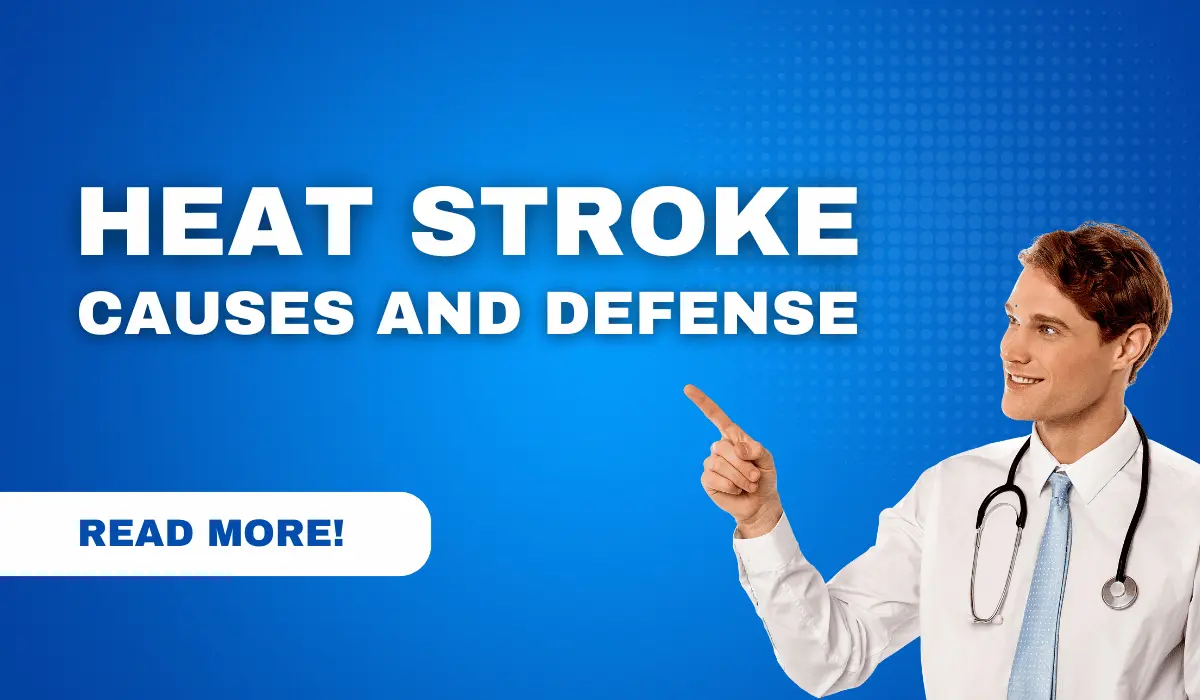As the world grapples with the intensifying effects of climate change, heat-related illnesses, such as heat stroke, have become increasingly prevalent and concerning. In 2024, with temperatures rising and extreme heat events becoming more frequent, it’s crucial to understand the causes of heat stroke and adopt effective strategies to defend against it.
Understanding Heat Stroke:
Heat stroke occurs when the body’s temperature regulation system becomes overwhelmed by heat, resulting in a dangerous elevation of core body temperature. This condition can be life-threatening if it is not promptly treated. Several factors contribute to the development of heat stroke:
- High Temperatures: Exposure to excessively high temperatures, especially for prolonged periods, increases the risk of heat stroke. In urban areas, where concrete and asphalt retain heat, the risk is further amplified.
- Humidity: High humidity impairs the body’s ability to cool itself through sweating, as sweat evaporation is less effective in humid conditions. This makes individuals more susceptible to heat-related illnesses.
- Physical Exertion: Engaging in strenuous physical activity, particularly in hot environments, raises the body’s internal temperature and accelerates dehydration, increasing the risk of heat stroke.
- Dehydration: Inadequate fluid intake, whether due to insufficient water consumption or excessive loss of fluids through sweating, can lead to dehydration, further compromising the body’s ability to regulate temperature.
- Certain Medications and Health Conditions: Some medications and pre-existing health conditions, such as heart disease and obesity, can impair the body’s ability to cope with heat stress, increasing susceptibility to heat stroke.
Defending Against Heat Stroke:
Given the serious implications of heat stroke, individuals must take proactive measures to protect themselves and others, especially during periods of extreme heat. Here are some strategies to defend against heat stroke in 2024:
- Stay Hydrated: Drink plenty of fluids, preferably water, throughout the day, even if you’re not feeling thirsty. Avoid excessive consumption of caffeinated or alcoholic beverages, as they can contribute to dehydration.
- Seek Shade and Cool Environments: When outdoors, especially during peak heat hours, seek shade or cool indoor spaces whenever possible. Limit exposure to direct sunlight, and take regular breaks in air-conditioned or well-ventilated areas.
- Dress Appropriately: Wear lightweight, loose-fitting clothing in light colors to reflect sunlight and aid in the evaporation of sweat. Wearing a wide-brimmed hat and sunglasses can provide additional protection from the sun’s rays.
- Limit Outdoor Activities: Minimize outdoor activities, particularly during the hottest parts of the day (usually late morning to early afternoon). If engaging in physical exercise or work outdoors is necessary, schedule activities for cooler times of the day, such as early morning or evening.
- Use Cooling Measures: Take advantage of cooling measures, such as cooling towels, misting fans, or cold compresses, to lower body temperature and alleviate heat-related discomfort.
- Check on Vulnerable Individuals: People who are more susceptible to heat-related illnesses include children, the eld-erly, and those with pre-existing medical conditions. These groups should all be constantly watched. Ensure they have access to cool environments and an adequate supply of water.
- Know the Signs: Familiarize yourself with the symptoms of heat stroke, including high body temperature, rapid pulse, headache, nausea, confusion, and unconsciousness. If you or someone else exhibits these symptoms, seek medical attention immediately.
FAQ:
What is heat stroke?
Heat stroke is a severe heat-related illness characterized by dangerously elevated core body temperature.
What causes heat stroke?
Heat stroke is caused by factors like high temperatures, humidity, dehydration, physical exertion, and certain medications or health conditions.
How can I defend against heat stroke?
Stay hydrated, seek shade, dress appropriately, limit outdoor activities during peak heat, use cooling measures, and be aware of symptoms.
What are the symptoms of heat stroke?
Symptoms include a high body temperature, rapid pulse, headache, nausea, confusion, dizziness, and unconsciousness.
Who is most at risk of a heat stroke?
Groups in danger include children, older adults, individuals with pre-existing health conditions, and outdoor workers.
How does climate change affect heat stroke risk?
Rising temperatures and more frequent extreme heat events increase the risk of heat-related illnesses.
How can I stay safe during extreme heat?
Stay hydrated, stay indoors in cool environments, wear light clothing, and avoid strenuous outdoor activities during peak heat hours.
When should I seek medical help for a heat stroke?
Seek immediate medical help if you or someone else shows symptoms of heat stroke. It can be life-threatening and requires prompt attention.
Conclusion:
As temperatures continue to rise due to climate change, the threat of heat-related illnesses like heat stroke looms larger than ever. By understanding the causes of heat stroke and implementing effective defense strategies, individuals can reduce their risk and stay safe during periods of extreme heat. Remember to stay hydrated, seek shade, dress appropriately, limit outdoor activities, and be vigilant for signs of heat-related distress. Together, we can combat the heat and protect our health and well-being in 2024 and beyond.


